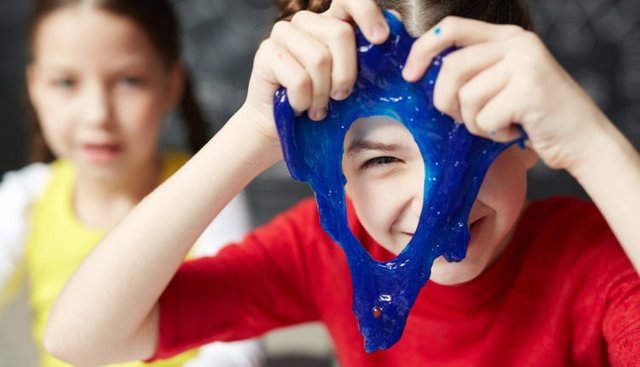
It is one of the favorite games for children and teenagers, a slimy and sticky pasta that is modeled at will. On the web you will find thousands of video tutorials on how to make the slime with a few homemade ingredients and ideas also in view of the Carnival.
Already marketed in the second half of the' 70s with the same name and relaunched a decade later, the slime - which in English means "burva" - is experiencing a new moment of glory: the youngest and teenagers go crazy. It is a blob that gives first of all pleasure to the touch. The ultimate fun is in its creation, in giving shape to a semi-liquid dough that solidifies with processing, in customizing the consistency, color and smell to then lengthen, crush and handle to not finish the soft and elastic mass obtained. It can be supervising, soft and other infinite variations: space for creativity!
Slime-mania: Reasons for the boom
The success of the slime is so much because, rather than buying it already ready in cans or buy the preparation kits, you can do it at home with common ingredients. Not only: what is done today after putting your hands in pasta? The good results, or the "failures" - epic fails-, are posted on the web, which is why the slime-mania has ended up feeding itself and having its own YouTube and Instagram stars. Karina Garcia and Alyssa Jagan are the overseas queens of slime DIY and share viral recipes. Among the social channels in Italian, Iolanda Sweets and Anita Stories are among the most popular.
The basic ingredients of the slime
But let's see what it takes to make the slime housekeeper. You need a mixture in equal parts of water and non-toxic vinyl glue (white or transparent) to which you add a few drops of food dye and an activator, a substance capable of giving it a gelatinous and manipulable structure; for example a mix of sodium bicarbonate and contact lens solution, which works and is safe. The concoction must be worked with a spatula and then with the hands until it takes shape.
Use common sense
With these ingredients you get the classic slime, the viscous slime already known in the past decades.
Dissolved borax powder, liquid laundry detergent and dressing are also activators, but should be used with caution as they may cause irritation - and of course never ingested. If your children play the little chemist, carefully check the products they use and if they are still small and put everything in their mouths, make sure that they use edible components: the slime can be done in many ways, even without glue and with the only cornstarch mixed with water.
Slim and slime
The variations on the theme are endless. First of all, you can indulge in the choice of colour, but also add glitter, beads, pietrines or balls of expanded polystyrene (slim crunchy, which makes noise), corn starch to thicken and matt the slime, oil to make it shine, coffee, cinnamon or other spices to perfume it: sight, hearing and smell also want their part!
Slim fluffy is among the most beloved, because it's ultra soft and your fingers sink into it: you get it by incorporating shaving foam into the base compound.
It's Carnival: putting confetti in the slime
If you are looking for the word "slime" on social media or on Amazon and Etsy, which offers craft creations for sale, you will see that there is a slim word for all seasons. In view of the Carnival, nothing better than creating an ad hoc one. Is it necessary? Confetti confetti and streamlined stars spray to be incorporated into the standard mix: on Iolanda Sweets, for example, there is a carnival tutorial from which to take inspiration. Or just get the main ingredient, fantasy: in Carnival every slime is worth!